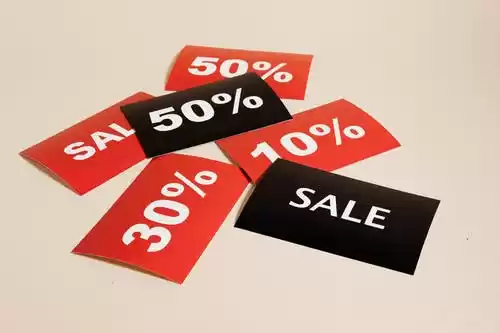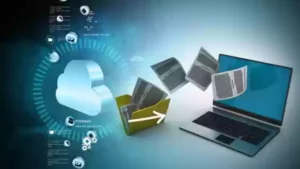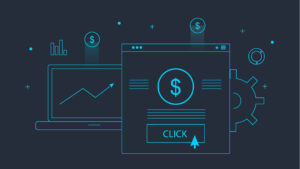
Knowing about and understanding the sales funnel is a great aid in building a successful business. Developing a strong strategy helps you attract prospective buyers, convert them into purchasers, and retain them as loyal customers who come back to your company over and over again.
Whether you realize it or not, every business has a sales funnel of some shape or form. We’re going to look at ways to ensure your strategy is as effective as can be.
The customer journey
From the moment a prospective buyer becomes aware of your business to the one where they evolve into a paying customer, they’re passing through your sales funnel.
Let’s use a brick-and-mortar store as an example. The first stage in any sales funnel hinges on awareness. Members of the public passing by your shop and seeing window displays are at the very top of the sales funnel. Depending on how inviting the store looks, a percentage of these prospective customers will enter, passing into the next stage of the funnel.
This stage is all about consideration. The customer will make their way around the store, looking at different products and deciding on what, if anything, they wish to purchase. They may be influenced by in-store advertising, promotional offers, or a host of other factors. Once they’ve selected their purchases, they’re ready to move into the next part of the funnel.
The conversion stage is where the purchase takes place, and the prospective buyer becomes a paying customer. They take their chosen products to the cash register and hand over their hard-earned cash in exchange for your goods and/or services. However, their journey through the funnel doesn’t necessarily end there.
If you’ve made a good impression on the customer and they’re happy with the service they’ve received, there’s every chance they’ll pass into the loyalty section of the funnel, where they become a repeat customer and bring their business back to you in the future.
A good sales funnel strategy might even see them pass into the advocacy stage. This means that not only will they return to you as a customer, but they’ll recommend your business to their friends, co-workers, and even strangers on the internet, thereby increasing your customer base and introducing new buyers into your funnel.
Why do I need a sales funnel strategy?
You may be wondering why a sales funnel strategy is so important. After all, it sounds like clients make their own way along the customer journey to give you their money, right?
Wrong! While it’s true some customers will stumble upon your products and services by chance, the vast majority will need gentle coercion to choose your business over your competitors and become loyal customers.
The sales funnel is there to drive customers toward a sale. A good sales funnel strategy plugs any gaps in your funnel where a potential customer may drop out, ensuring your conversion rate is as high as possible.
Obviously, the sales funnel operates differently for online businesses compared to a brick-and-mortar store, but the basic concept and the ultimate goal remain the same.
How do I create a sales funnel strategy?
The most effective sales funnel strategy is one that covers every stage of the customer journey and drives customers toward giving you that sale.
Let’s take a look at what can be done at each stage of the journey to get your sales funnel flowing at full speed.
Awareness
This is your chance to make a great first impression. At this stage of the funnel, the focus should be on acquiring leads i.e. potential clients who might become customers down the line.
Although generating sales is the ultimate goal, at this point you should be more concerned with building a relationship. There are many ways to do this, from email advertising to sales appointments.
Having a top-notch website is a great place to start. Displaying a clear message regarding what your business offers and how it can help clients is key. You can use a variety of tools and tricks to increase awareness. Blog posts, vlogs, banner ads – all these help guide prospective buyers to the top of your funnel.
A good way to garner interest is with a lead magnet. This could be something as simple as offering a discount code when signing up to your mailing list. It gives potential customers an incentive to provide their contact information, allowing you to communicate with them in the future. An initial discount code also gives you a chance to wow your new customer with their first purchase.

Consideration
Now your customers are aware of what you offer, you can begin to show them why you should be their number one choice when making a purchase.
This can be done in a variety of ways. Email campaigns that drip-feed information to leads can be successful, as they build a relationship steadily. Robotic process automation software can be invaluable at this stage, taking care of the arduous task of sending out mass emails and allowing your human sales team to focus on more personal matters.
Adding a personal touch will resonate with some leads, so contacting them over the phone could be a great way to build a rapport (emails can seem a bit impersonal). It may seem daunting to go through this process for potentially thousands of leads, but aids such as a power dialer can ease the burden.
VoIP phone systems for small business will make phone communication a breeze. Communicating with leads and finding out exactly what they require can be key to converting them into customers.
Having a robust communication network is also a good idea so that if potential customers want to enquire further about the information you’ve sent, they can do so easily. An automated phone system can be a great help in directing phone calls to the right department, ensuring leads are given the information they need in a timely manner.
Conversion
Now you’ve built a relationship with your leads, it’s time to turn them into customers. This is the point at which the lead will decide the product or service you’re offering is the best one for them. Conversion optimisation services can be a help here.
Having a strong landing page is a great place to start. The whole page should be designed to close the sale. Using the same language and key phrases that have populated your emails is a good idea, as it creates a seamless experience for the customer. Bright, eye-catching colors and a clear focus on cost and any promotional offers will drive the customer to the ‘buy’ button.
It’s worth remembering that not every lead will turn into an easy sell. There will be some who need a bit more persuasion; having a series of stock responses you can turn to when leads get in touch with questions about shipping costs or bulk discounts will ensure you’re not caught off guard.

Loyalty & advocacy
Now your customer has made the purchase, it’s time to go that extra step to earn their loyalty. After all, why would you neglect existing customers in favor of attracting new ones? Especially when studies have shown that acquiring customers can cost up to seven times as much as retaining them.

Email offers can come into play here, and offering customers discounts for repeat orders will draw them back time and again.
Encouraging customers to leave reviews will help to build your reputation as a trusted business, and using testimonials on your site can work in conjunction with this.
It’s important to remember that not every lead will turn into a sale, and not every sale will result in further sales. But there are ways to draw lapsed customers back into the fold – welcome back discounts are a great tool to tempt clients back and can be easily communicated by email or SMS.
Loyalty and other reward programs are great incentives to keep customers choosing your business over your competitors too.
The importance of a sales funnel strategy
We can all agree now that the importance of a sales funnel strategy can’t be overstated. From customer acquisition to retention, an optimized sales funnel benefits your business at every stage of the customer journey and can be the difference between being unheard of and being an industry leader.
Use every tool at your disposal to hone your sales funnel. Top-notch digital marketing and careful communication will draw in as many leads as possible and turn them into loyal customers in no time.
It’s also important to remember that not every lead will result in a sale. Hope for the best, but prepare for the worst, and try not to take any rejections to heart.
Don’t be afraid of a little trial and error. Analyze your sales funnel strategy with analytic tools to find out if there are any weaknesses you need to fix. Listen to customer feedback too, and remember to look after the customers you’ve already converted to keep them coming back time and again.




